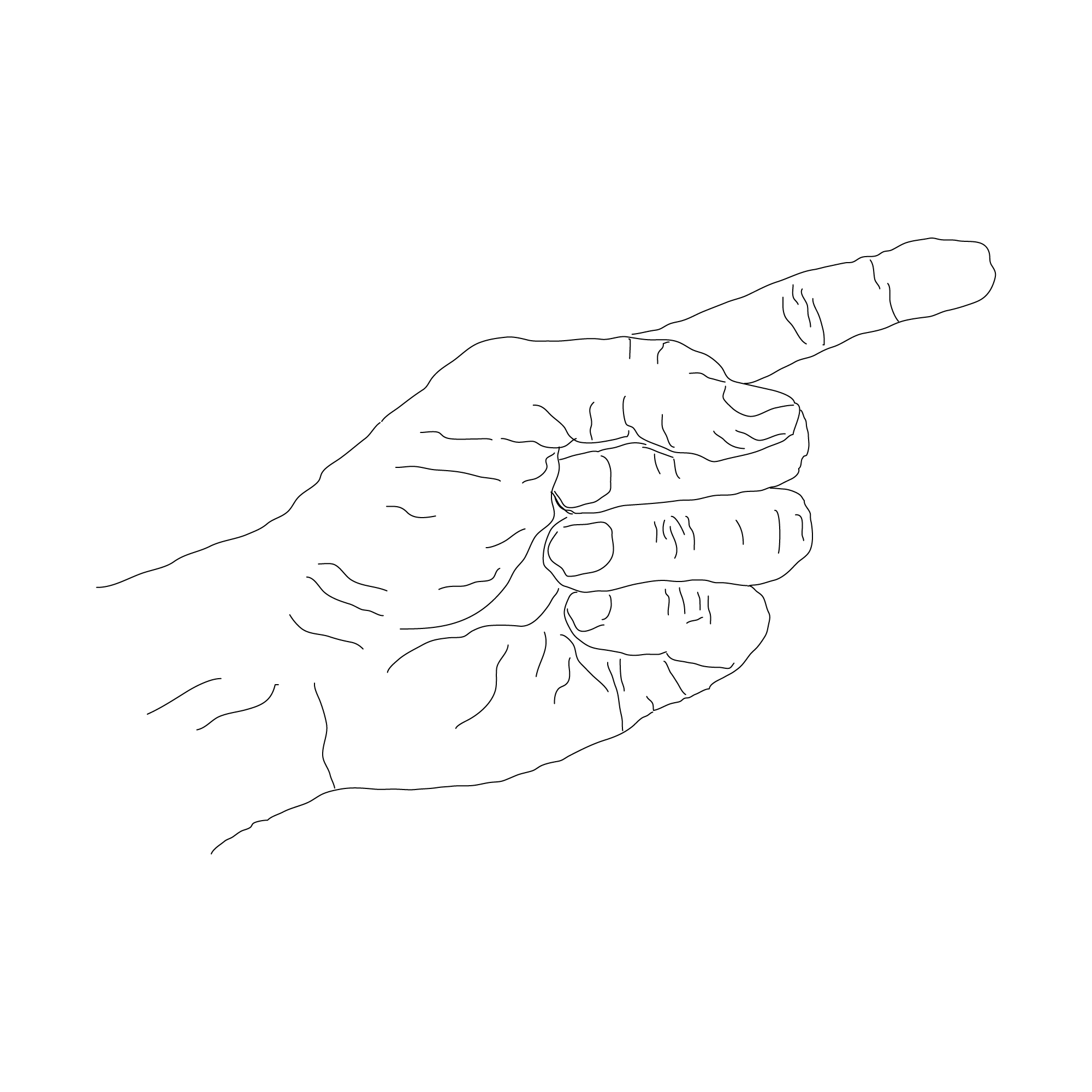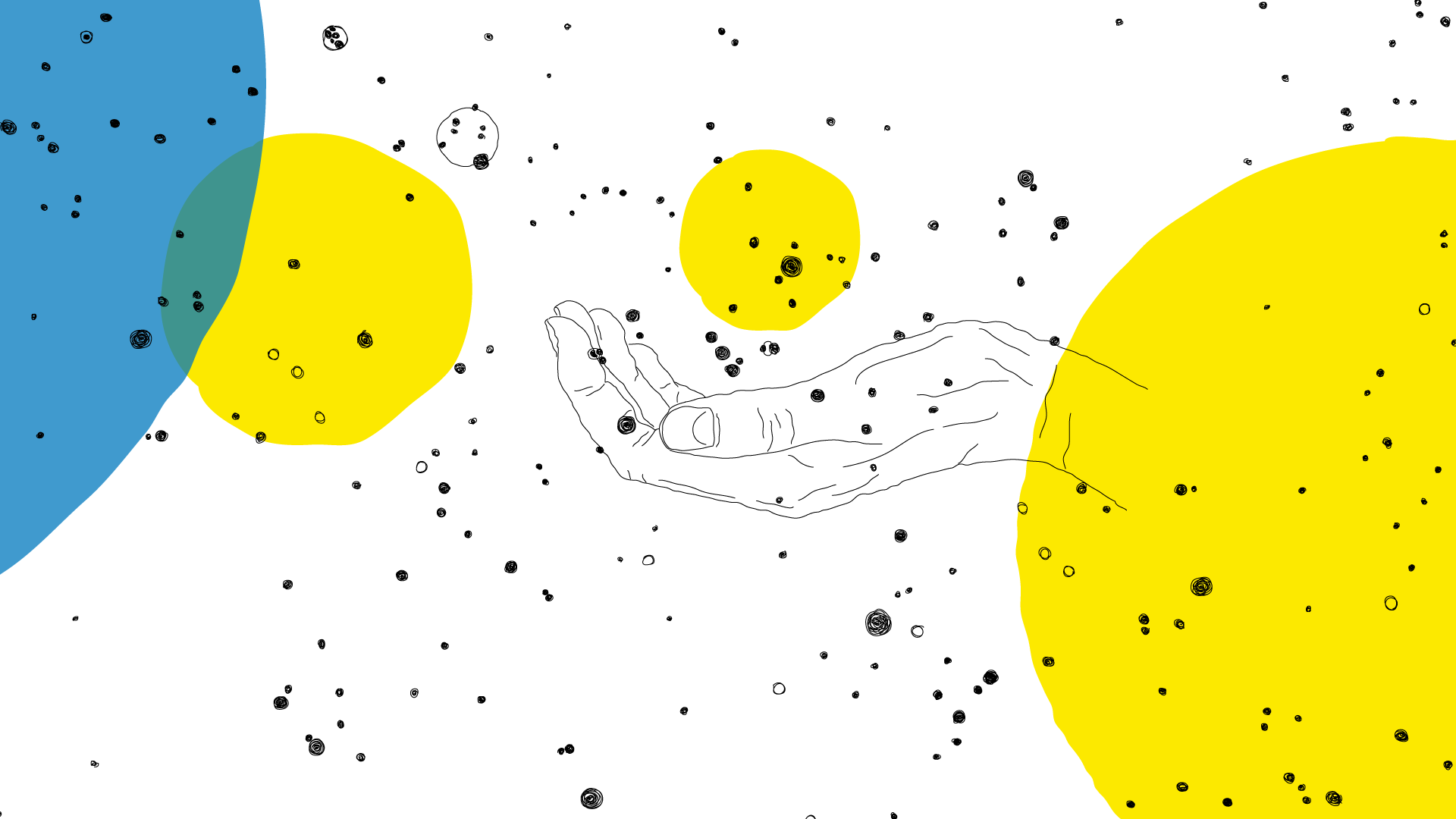
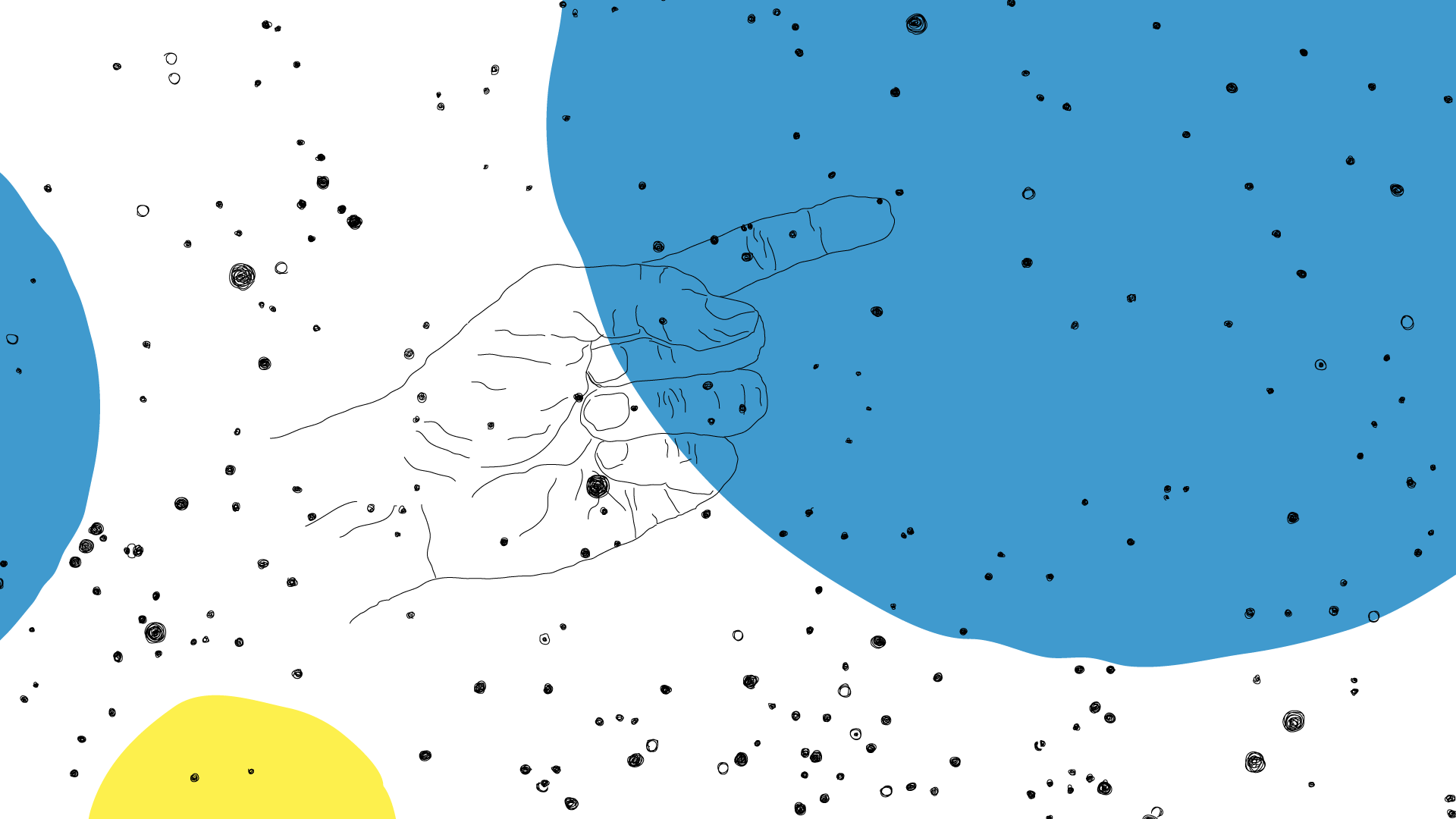


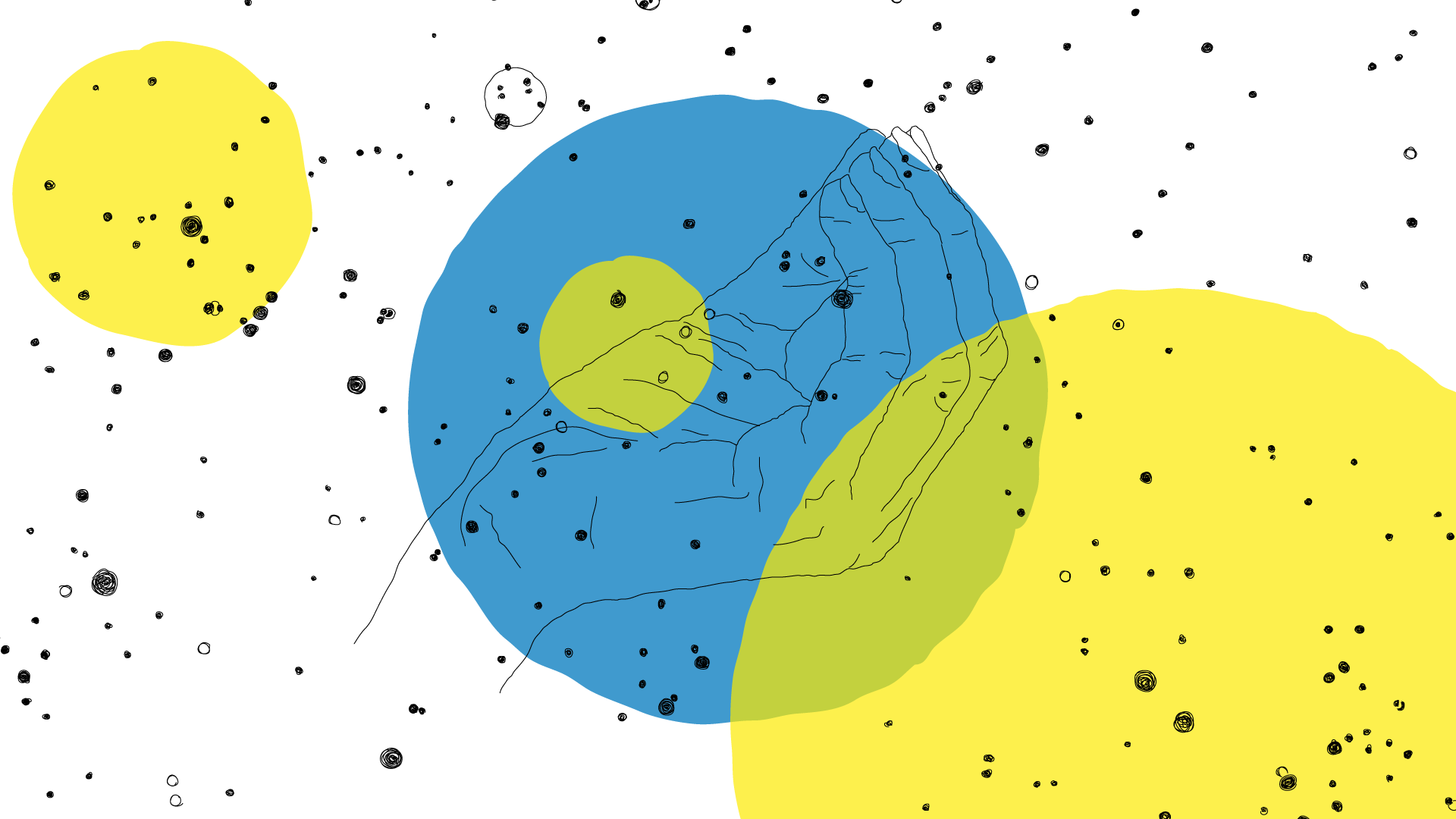
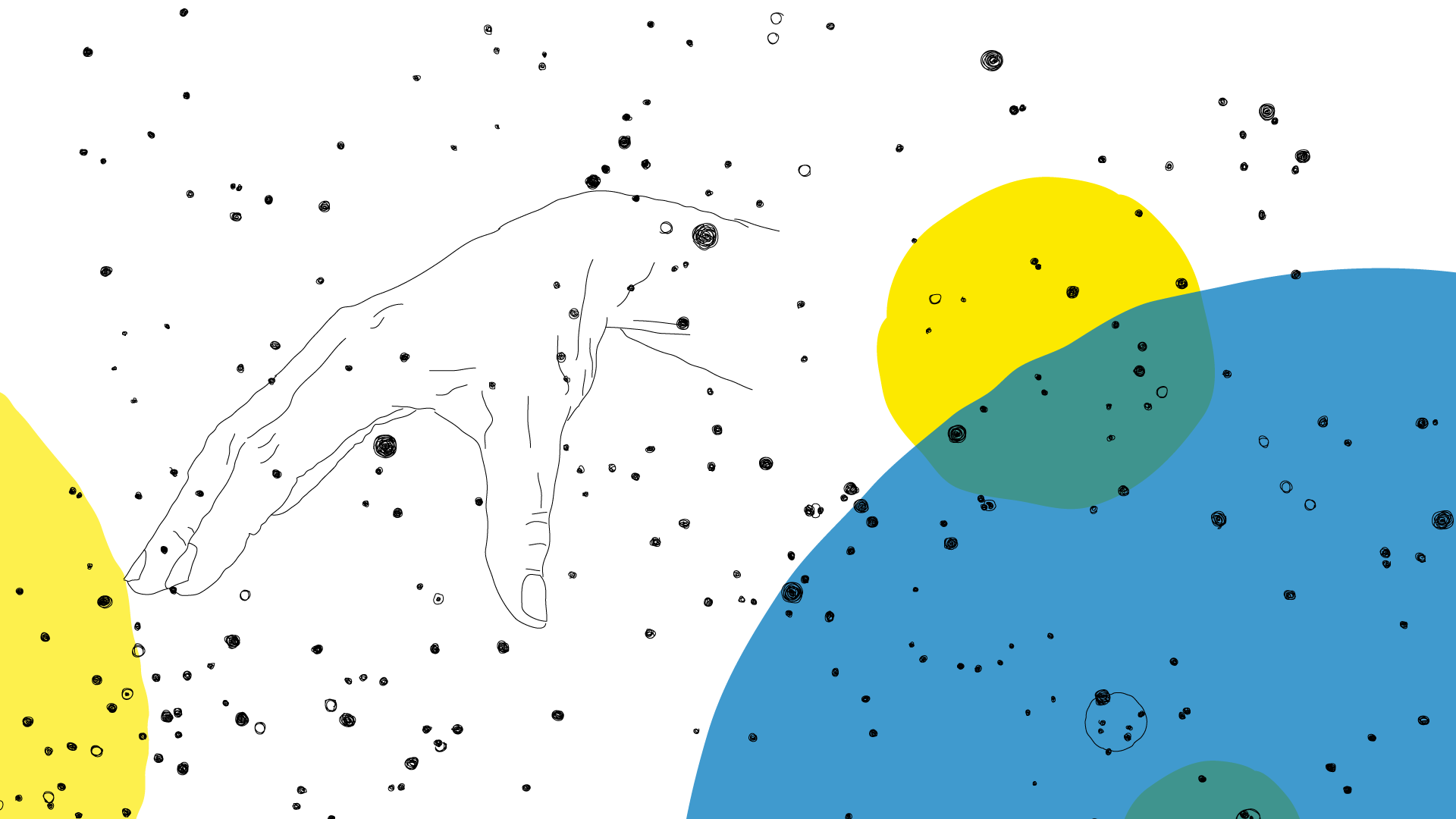
Kaya. We acknowledge the Whadjuk People of Boorloo boodja who are the traditional owners of the land where Semaphore is made. We respect their culture, their custodianship, and their continuing contribution to the life of this city and this region. That includes recognising and respecting sovereignty while working in solidarity towards a treaty and supporting ongoing connection to country. That means linguistic rights, economic opportunity, and artistic endeavour. To their Elders, past, present and emerging, we say thanks.
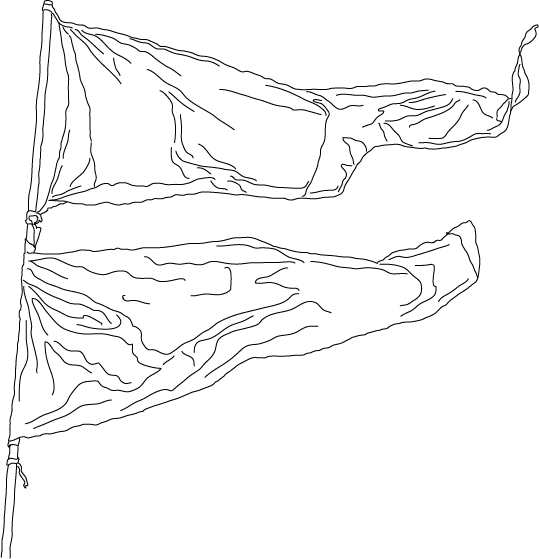
SEMAPHORE is an emerging arts publishing project in the process of reflection and planning for the future.
FRAMES OF REFERENCE is a series of conversations considering ideas of identity and governance, bureaucracy and power, creativity in light of regulation, the role of text to other arts, and collaborative relationships. It's a project about how creative work grows from initial ideas and personal practices, into collectives, groups, and projects larger than were originally imagined.
As part of the Fair Isle exhibition at DADAA in Fremantle, Semaphore editors Kelly Fliedner and Melissa McGrath will meet with and gather information from industry leaders, peers and community members regarding processes for supporting arts practice in WA. We will record these exchanges and publish our reflections to share the process of thinking through making and document local histories and knowledge.
We have put together six ‘coordinates’ that will guide the conversations we share with participants: ‘collaboration’, ‘function’, ‘scope’, ‘breadth’, ‘form’ and ‘representation’. You can read more about each of these coordinates below. We invite you, the audience, to also ponder these coordinates as they relate to your own guiding principles for personal action and participation in community.
Frames of Reference is a project about acknowledging and becoming.

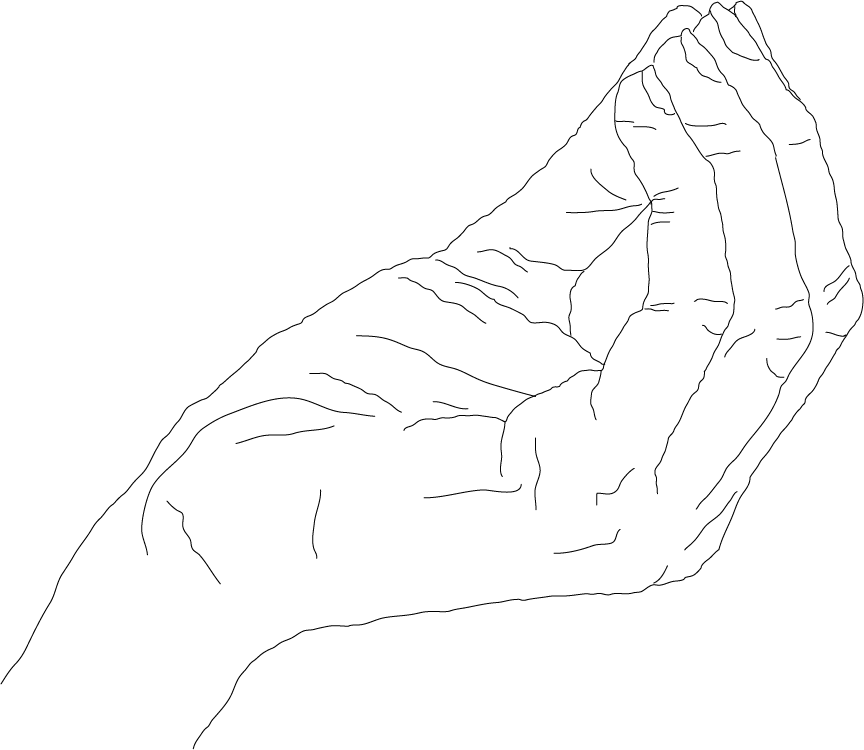
FUNCTION — We focus on the function of text in the presentation and consideration of artworks and art practices, with particular interest in writing that creates conversation.
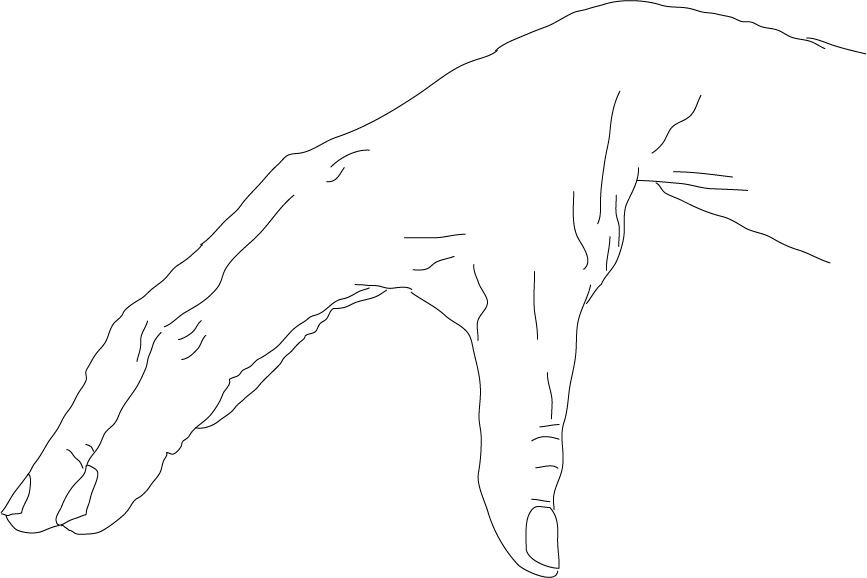
BREADTH — We work with writers and artists who use the premise of responding to art as an opportunity to explore broader cultural themes.
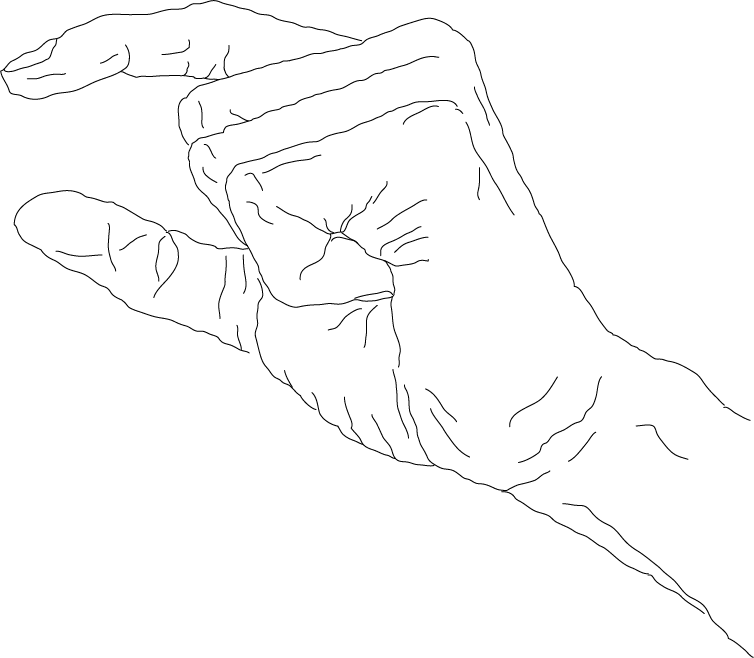
FORM — We recognise the various forms of text and dialogue and regard the value of publishing written words, recording voices and facilitating events for sharing and learning as equal.
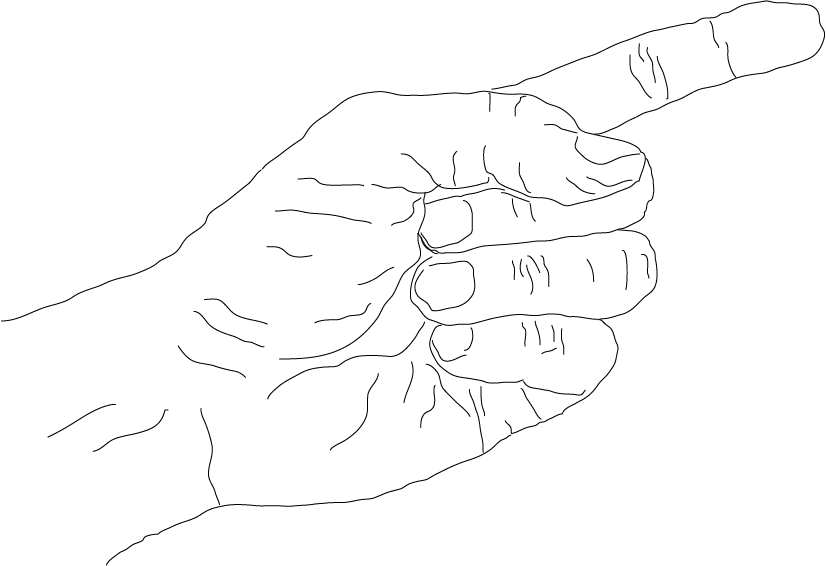
REPRESENTATION — We acknowledge the importance of including underrepresented perspectives within a contemporary archive. We seek to document histories and facilitate intergenerational knowledge sharing.
COLLABORATION — We acknowledge that artistic labour requires structural support and takes many forms. We embrace the intersection of roles including artist, writer, curator, designer, student, audience, administrator, producer, performer, educator and community member.
![]()
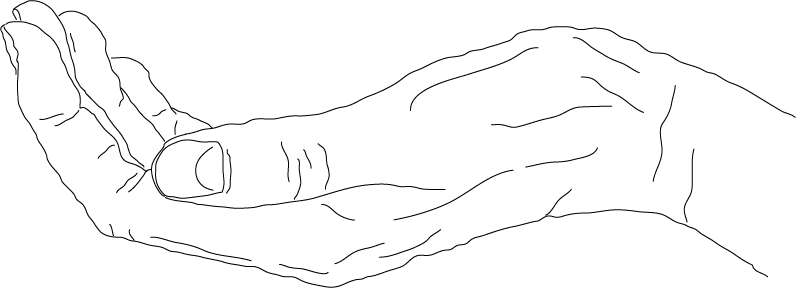
Over the course of the Fair Isle exhibition we will be conducting a broad range of interviews and conversations. Those conversations will be archived here and will include those participating in the Fair Isle exhibition, our current Semaphore Committee, members of the Arts Writing Group, leaders who have administrative and organisational experience, and of course those with specific ties to the Perth art and culture industry.
Please join us for our 'office hours’ on Saturday 27 March, 11am - 1pm
This time is intended for any members of the community who would like to come and contribute to our Frames of Reference conversation. We will be waiting.
—
EXHIBITION INFORMATION FAIR ISLE DATES:
16 February – 17 April 2021
DADAA GALLERY LOCATION:
92 Adelaide Street, Fremantle WA 6160
OPENING HOURS:
Tuesday–Saturday, 10am–4pm
—
CONVERSATION ARCHIVE:
#1 — Introduction: Kelly Fliedner and Melissa McGrath
This conversation took place in Kaarta Gar-up (Kings Park) across the road from Kelly’s apartment; near a playground, under wonil (peppermint trees) and surrounded wardong (crows). As you will hear at the beginning, we did not originally intend to publish the recording. But listening back, there was something in our words that illustrates how we work together and maps out where Semaphore currently sits.
We almost always eat pastries at our meetings, and meet where it feels good and comfortable to dwell and think. It is important that alongside conversations about admin, schedules and to-do lists, we’re also enjoying each other's company, and the environment we are in.
This is the first of many conversations we will host over the coming months. It aims to give some context to our thinking and hopes for how we consult with our community to solidify and define Semaphore’s movement into the future. These conversations happen for us alongside the everyday. So, likewise, we encourage you to listen to this as you clean the dishes, wait for the bus or walk your dog—listen as you go about your day.
—
We almost always eat pastries at our meetings, and meet where it feels good and comfortable to dwell and think. It is important that alongside conversations about admin, schedules and to-do lists, we’re also enjoying each other's company, and the environment we are in.
This is the first of many conversations we will host over the coming months. It aims to give some context to our thinking and hopes for how we consult with our community to solidify and define Semaphore’s movement into the future. These conversations happen for us alongside the everyday. So, likewise, we encourage you to listen to this as you clean the dishes, wait for the bus or walk your dog—listen as you go about your day.
—
[Kelly Fliedner]...birds in the background. Wardong [crow].
So with this recording, obviously we're not going to publish this recording, but maybe we can just kind of look at the transcript and then edit from there?
[Melissa McGrath]Yeah. Would it be useful to start talking about like, why we are doing this or like what's... or do we like talk through the reference points?
[Kelly]I think it's good to talk about the prompt of the exhibition. So Fair Isle being this kind of moment where Katherine [Wilkinson, Curator at DADAA] has asked us to participate, not only as people who are like documenting the show, or kind of bearing witness to the actual exhibition itself, like through potentially writing or conversations or things like that. But that also it's ended up being a prompt for us to think about how we work collaboratively together. Like how the themes of the exhibition actually affect us as a collaboration, thinking about moving forward, thinking, like imagining what a future of this project could be.
[Melissa]Yeah
[Kelly]Also at a moment where it felt a little unsure what to do with Semaphore. I think we'd been doing it for a year almost when Katherine started talking to us. Um, and then over then over the last four or so months taken a break to really think about it some more.
[Melissa]Yeah.
[Kelly]So it feels like a transition point.
[Melissa]Yeah.
[Kelly]Yeah.
[Melissa]And I kind of feel like the break has almost been caused by this request to participate in the exhibition because we have been like, Oh, what? This is a space that we hadn't like pursued existing within, but now we've been invited inside of this space and how do we move into it in some way? Or take this into there?
[Kelly]Yeah. I think when we started Semaphore I wanted it to be this big collective and that we would have writers contribute on a regular basis through the year. And we definitely have had people who are part of the project, like Gemma [Weston] and Emma [Buswell] and Alana [Hunt] and Christina [Chau] who have like been ongoing forces or people to rebound ideas off and very important, participants in Semaphore. But it definitely has been a challenge. It's hard to sustain momentum when it's just the two of you and you're working on other things, right?
[Melissa]Yeah, yeah.
[Kelly]Yeah. And there's lots of barriers to participation.
[Melissa]And I think that's maybe one of the idealistic things that you go, 'oh keeping something flexible means that it is open, and can change shape, and, lots of people can participate’, but in fact, sometimes that makes it harder for people to know how to engage with it.
[Kelly]Yeah, for sure.
[Melissa]Because it is fluid or it seems opaque as opposed to there being structures that instruct. Um, and make very transparent what it is that is happening with this platform that we've created. And how to step into it, how to contribute, which I think is kind of what we're trying to do now.
[Kelly]Yeah. Like how do you build a different, how do you build from what we've already done, to return to that like more utopic collective sense? And maybe you actually have a different idea of where you want, you want Semaphore to go. But I still maintain, like I still have that desire for it to be a place that like, new graduates could say, ‘Hey, I want like, write about this thing’. Or anyone who is going to an artwork in Perth who has like a particular response and a burning desire to kind of like put it down. That Semaphore is a place for all of those different kinds of responses and creating a conversation. I want it to be that. So the question is, how do you do that?
[Melissa]I think there's two things there though. There's like form and content and then there's organisational structure and like pathways to contributing. And they, for me, I feel like they seem different. So it is definitely for me about making that space that is for the content very flexible and, you know, um, doesn't sort of like predetermine what might be published or people might contribute at any given time. Um, but that, there does, I feel like there does need to be a, the relationships maybe need to be a bit more like visible so that it doesn't feel like you have to be our mate before we would publish your writing or you know, that people outside of our immediate network understand how they could contribute. And that we're like building something that courts that.
[Kelly]And maybe that's actually just the natural progression of taking something from a small collaborative project between mates to something that is more institutional that is hopefully funded, that is giving itself and participating in a broader network. And so there's lots of opportunities with that and lots of responsibility with that, which I don't think, and thankfully we haven't had thus far, but I think it's kind of ready to be pushed in that direction.
[Melissa]Do you feel like when you say ready, do you feel like we've kind of done the building, the initial thing, and now it's almost like sometimes I've felt over the last couple of months that we've been having these, these kind of reflections is almost like needing or wanting like another challenge. Like, it doesn't seem enough for us because we're having this kind of conversation right now just to be writing and publishing things. There's like another layer to what we're trying to do with Semaphore that requires this other kind of work. It's not, we're not just editors is kinda what I'm trying to say.
[Kelly]So I really love writing about art and I find it really energizing. It's a lot of work, but it's instinctively the way that I participate in the arts community and I want to do it often, but I also don't want Semaphore to just be my voice. And that's why the relationship that we have is so important to me because it's supposed to, it's not only a benefit to my own writing practice that I have the opportunity to discuss what I'm writing with someone whom I like respect their voice and their own, um, approach to art practice. It just makes my writing better. That it's a part of a conversation. So how do you like kind of bring more people along with you in that conversation? Because it just will make it a far more interesting project, right? If it's just one person it's just a blog, it's just kind of one way conversation. I mean, and also not very useful for the arts community.
[Melissa]And this is, yeah. I think this is the usefulness or the purpose of it, um, feels in some ways quite immediate. Um, but also, a long-term use as well. In my mind. So like...
[Kelly]Yeah. You're participating in creating an archive. Of practice right now. And I don't mean that in a like tethering, what everyone's doing to some historical marker. It's like, what is... there's people doing amazing stuff, wouldn't it be a shame if we didn't gesture to it or acknowledge it or there's stuff that deserves to be discussed in a broader context, other than like through conversation with mates at an exhibition opening, you know, um, I had this conversation with [senior Melbourne-based painter] Peter Tyndall once about, you know, like artists run initiatives and small practice, small audience practices in the past, in the seventies and eighties. And, who do you make work for if your like immediate audience is small and he, his answer is always 'history is your audience'. And it's just this like really beautiful gesture to the future to say, 'Hey, maybe someone reads this at some point and they can see that this work affected someone in a meaningful way.'
[Melissa]Yeah. And I think the affecting and the kind of like response to experiencing something is quite important to me with this project, for this project. We're not necessarily publishing preemptive texts. They're not, which I think there's a lot of catalogue essays, these kinds of, sort of like, um, contextualizing from the other end of the process in some way. Um, which are important too. But I think something that I've really appreciated is...
[Kelly]The independence of it.
[Melissa]Yeah.
[Kelly]So if we're talking about all these overlapping artistic ecosystems, right, you have artists making work, festivals and different kinds of platforms or institutions where that work is shown, artist-run-initiatives, PICA, whatever. And then you have a kind of the overlapping ecosystem of text that surrounds or that is related. And that is exhibition catalogues and really important platforms like Seesaw that contribute to building an audience. But those things often have a close relationship to what the institution or the artist wants and how they want their work received. So it is important to kind of stand back and have a space that with some autonomy. And I'm not saying that what we do and the conversations that we have are this kind of removed relationship to work. Because actually, I don't think that Semaphore is that because we often kind of collaborate with artists and want to be a platform for artists to also kind of present their own thoughts and their work, but that it isn't beholden to those situations always.
[Melissa]Yeah. Part of that is because often what we are writing about has finished. Um, and so there's not that desire or need to kind of, as you say, generate an audience or, you know, push things, push people to physically go and see something. Um, it is, it's more looking back at what it was actually like.
[Kelly]This on a conceptual level is really important to think of that remove or the distance. But I think on a pragmatic and nuts and bolts kind of way interesting too, because we also have to consider what the sustainability of this is moving forward and how we might create a model to pay writers to participate. Right. Which is such a huge barrier for people participating. Um, but we don't want to be paid by institutions to create content. I mean, we say that participating in Perth festival right now. Perth Festival is the only organization that has given Semaphore any money.
[Melissa]So yeah. The two projects that we're working on, obviously is this exhibition for DADAA curated by Katherine, that we've sort of been invited as artists, but also responders, respondents to the project. Um, but again with absolutely no, um, particular like...um, we're currently being attacked by ants... um, particular kind of formal outcome. Like, it didn't matter what we did.
[Kelly]Yeah. And I think there was a freedom in being asked as creative practitioners. Um, and this is one of the great things about the slipperiness of what Semaphore is. Is it a publishing project? Is that a kind of collaboration between the two of us? Is it a creative project that has drawings and what is the relationship between text and art? And those boundaries are kind of slippery and well, there's a slippage between those things, which is probably one of the barriers for people getting involved, but it also maybe potentially makes it easier to kind of navigate problems around independence and expectations from institutions. I think it's an acknowledgement from Katherine and DADAA that it is a little, it is a different kind of publishing project.
[Melissa]Yes.
[Kelly]Um, so how do we become an institution, but kind of maintain that fluidity and the slipperiness between artistic practice and publishing project. But the other thing is that the art writing group is an education project. So we're being employed by the festival, to offer a service that is definitely not here in Perth I don't think. And that's to really engage in a critical way with ideas and language around art because the art schools in Perth definitely don't do that. And institutions don't do it in the way that we're doing it. Yeah.
[Melissa]I think the other, so there's definitely the, kind of like the text side of the arts writing group. The other thing that I don't know that there's so many formal structures for is actually just networking based around practice outside of tertiary institutions. Um, you know, nationally and internationally, there are lots of different programs that run continuously that are about bringing cohorts of young practitioners together to share skills and experiences and perspectives. Um, but those kinds of like collective professional development models really only, I feel sit within the festival in Perth.
[Kelly]Yeah. No one else is offering, no one else is offering that service at all, which is kind of crazy.
[Melissa]I feel like, and maybe this brings us to something that we have also talked about is like the other people who were doing things that, um, we are like, wow, that's really cool, and a little bit like what we're interested in, because one thing I would say is that like models like Proximity Festival do do that, bringing together people who have some common purpose, but come at it from lots of different angles, but then you've got that much longer development and sharing process. That connects with PVI Collective and their whole interesting straddling of institution and independent artists, which we've talked about a lot as being like a fascinating structure.
[Kelly]Um, yeah, I'm obsessed with PVI and how they've been able to make that project so sustainable for such a long period of time.
[Melissa]For so many people.
[Kelly]For so many people! It's a really interesting institutional model. And hopefully we can talk to someone from PVI about how that came about, because just so interested in it and you know, organizations like Tura too, and you're like, you do a kind of strange obscure niche, artistic thing, and yet you've been able to persist. So where have you found that support and what, who are the audiences that you're talking to and the kind of services that you're offering artists. There's lots of really good examples of that. And even the kind of amazing network of practitioners who form book clubs and have ongoing crit sessions with each other outside of institutions. Semaphore is trying to kind of tap into both of those zones.
[Melissa]Yeah. I think that's like a pretty good, that feels like a good summary of like what we've been, what we hope that these discussions sort of unveil in some ways for us, or, or tap us into is some knowledge, because I feel like in there there's a lot of questions. What we've just discussed as much as there is. And the like purpose or hope for future action. Um...
[Kelly]Yeah, I think this project is hopeful because it seems that two of us have decided that we really do want to continue with it.
[Melissa]Yeah.
[Kelly]You know, because I could have last year kind of petered out and that would have been fine too. It was like, 'Hey, we did this like little publishing project for a year and wasn't it fun, wasn't it a fun way to engage with practice here? We said some great things and maybe someone will read it someday?'.
[Melissa]...If we keep renewing the [domain and hosting].
[Kelly]Um, but now this is different and it seems like an opportunity for us to like start having conversations with people outside of our small circle. Because if you're going to take the leap, if you're going to, in your mind, at least make the decision that this is worth attention and energy, then you want to do a good job of it. And wouldn't it be great if we had a bunch of different people getting, getting involved in like creating the architecture of the organisation from the get go. I think that this is the same as not wanting to be the only voice. Our limited view points are like, not enough.
[Melissa]Yeah. I also think that there's so there's like the aim to make the organisation, or like, however we organise this to be the best it can, based on the people who we can learn from, or the histories we can understand or the whatever. But then there's also part of what our aims are for this project to make what we're doing incredibly transparent. Firstly, I think so that it's clear what we don't do. We're not the only kind of authors of writing about art in Perth. Like there's an understanding of like how we've built this thing, why we've made these decisions and how people could have made different decisions in some ways and made something else. Um, that comes from a frustration maybe of us. I feel like we've had a lot of conversations about the institutions that do exist in the world. Um, not, and we're not just talking even specifically about the arts community or industry or whatever now, like generally, and there not being transparency around how they operate, how decisions are made, whose power is being exerted. Um, these kinds of things that if, um, and so I feel like there is value in attempting in some ways to like crack open this process that we're endeavoring to undertake. Um, so it's not the idea that it is kind of going to become this kind of like utopic democratic. Everyone gets a say in what Semaphore is, but everyone will understand what we have done because we're trying to illustrate this process. And so I suppose when I said what we don't do earlier, wasn't to be like shutting down, you know, we will only serve this remit forever and ever, and will become this like static thing, but it's almost to allow space for people to do other things. That like there are limits to our perspective and what we have the capacity and also in some cases the right to facilitate.
[Kelly]Yeah.
[Melissa]And our kind of occupying this space, shouldn't prevent people who have access and interests and rights to other spaces feel as though they can't do that because we are here or this exists.
[Kelly]Yeah, I guess the other thing in creating transparency around the process of becoming institutional is that I feel when organisations merely tick the box of incorporating, or they kind of make that jump from small collaborative venture to something more kind of concrete that in not kind of thinking about that process critically, you miss a massive opportunity to kind of like critique the process from inside it. And it makes me think about when you're at university and you're doing research projects, particularly when you have to interview people and universities make you do ethics, they make you get ethics approval for your project. So that you're not unnecessarily putting a bunch of people through like undue stress or, I mean, there's lots of different reasons why you need to do ethics. And I have always felt in the, in the various times that I've had to get ethics approval for my projects that like the university treats it as a nuisance for you to tick off.
[Melissa]Yes.
[Kelly]That reminds me of this process of incorporating. Potentially incorporating! We're not even quite sure if we will become incorporated, but it seems like a really good idea to talk about like how Semaphore affects the industry that we like want to service, that we want to kind of participate in, like, you know, what are the ethics of like creating this project for the community? And there's no way that the two of us, or even the small kind of collective that we just said before, have the capacity to do that well. You have to like ask other people. It's like a way of acknowledging and also just kind of making sure you like doing due diligence to like the community. Yeah. And it makes it way more interesting for us.
[Melissa]Yeah, yeah. Yeah. Because as we said, right at the beginning, like the whole point of this was to have conversations and that what we're publishing is not just like a one way authoritative assessment of art in Perth, it's actually like serves as a provocation and a stimulus for more discussion to grow because that's something that we both enjoy. But also it's something that feels lacking.
[Kelly]Hey, can we move to the shade?
[Melissa]Yeah.
[Kelly]Before we talk about the Frames of Reference, just one other thing on the desire to engage and be of service to the community. This project is a way of making my life interesting, here in Perth. So it is both a desire to be of service, to a group of kind of people and organisations or whatever, like an ecosystem, right. That I feel very privileged to kind of participate in, but also it makes being here in this place. Interesting to me. Like it's both.
[Melissa]It's kind of what I, in some ways, what I was going to say was actually this idea that we're not just writing to reflect, we're actually writing to, um, connect what's happening here to other things. Yeah. Like it, it builds relevance into, or purpose, or I'm just thinking of things that we have published that are incredibly political, because it seems impossible to ignore shifts and changes that are happening in the world at the moment and how that relates to arts and culture here.
[Kelly]Yeah. I agree with you. Like, I totally agree with you, you can't ignore the fact that there is an international swell of energy around Black Lives Matter and you can't ignore the fact that we're living in a completely altered and changed world post COVID and that there are bushfires and that our climate is changing. How do we make sense of that through language? So it's cathartic as well. Yes.
[Melissa]Yeah, yeah.
[Kelly]Yeah. There are some texts that I feel I wrote in the last year that I would never necessarily have written. And I would like to kind of write more experimental prose and like have a kind of ficto-critical approach to the way that I'm talking about exhibitions, but, Oh, hey, we didn't see exhibitions for a bunch of time last year. And, and so we were kind of like responding to art in a completely different way.
[Melissa]What you said earlier of like we could have let this go this year or last year could have been that rupture point where everything got really difficult and weird and disrupted. And this was just like one too many things that it had kind of run its course. Instead I feel like what happened is that actually it filled this massive need for me personally, but I get the sense also from, for our audience too, the readers, um, and the people who were writing, who not just ourselves, like had this like desire to still be connected to people and doing, and reflecting and making. And so I almost feel like this actually got heaps more serious because of this last year. Where it could have continued on in a sort of semi flexible, not high stakes, not, you know, any expectation thing until we ran out of steam. Um, but its value got proven to us quite swiftly. And it seems silly to let that possibly just lose that steam. This seems actually more important than just writing a few little exhibition reviews and...
[Kelly]I agree. No, I agree. What, like, I totally agree. Like how could you not write about isolation and the weirdness of that and the bush fires and well, the world being [hey, get away, bird] the world, being on fire and people condoning the continued presence of Ku Klux Klan statues... how could you not write about that?
[Melissa]Yeah.
[Kelly]But also I wish, and I've said this to you a few times, right. I wish that I was writing more reviews. I have a bit of a guilt from last year actually. There's a couple of exhibitions that I thought were really fucking great: that seventies show that Robert did at, um, AGWA [That Seventies Feeling… the Late Modern curated by Robert Cook]; the Here and Now exhibition at Lawrence Wilson [Here&Now20: Perfectly Queer curated by Brent Harrison], I thought last year was really incredible; Um, Jo's show at Cool Change [Joanne Richardson: IF YOU MUST LEAVE YOUR HOME FOR SUPPLIES…]. There are a couple of projects that I was like, fuck I really want, I wish that I had responded in the moment to those shows and I feel like it was a missed opportunity. You can always look back at these works. Right. But there is something to kind of acknowledging the like immediate-ness of your context, like seeing a work and, you know, Perth was, although it was really disrupted last year, we still were very fortunate to have been able to see exhibitions when much of the world's exhibition program went completely online. So it'd be nice to acknowledge that.
[Melissa]Yeah. I mean, I didn't necessarily, um, think that, I don't think that, um, this last year has changed what we are doing. I think it, because there was still a lot of just responses to work that we published in that period of time.
[Kelly]Yes, totally.
[Melissa]Um, but I think it consolidated the value and the desire for that kind of writing. Um, that makes, a simple exhibition review feel more important and feel important to build a structure around to ensure that it keeps happening in this way as opposed to in a more commercially driven way. Yeah. I think the reflection and the theory or the critical energy that people bring to reading and writing for Semaphore is different to other platforms. And it feels important to protect that from our personal burnout. So there's, there's, there's the doing the work and then something that I think has forced a reflection for me of, from talking to the other artists that are in Fair Isle was Bo and Rose's [Bo Wong and Rose Megirian who work collaboratively as Wong+Megirian] conversation around like craft the craft industry in Western Australia and its lack of a peak body and thus its lack of like, um, uh, market development and um, that it really narrows the outcomes of the practitioners who work in that field because there's not someone else or there's not some other structure that's doing the collective work that needs to happen to allow the individual expression to be supported. And that's the work that I feel like we're trying to achieve with Semaphore also. That we can't, but also we shouldn't write all of the things, but what we actually, I think what the last year proved the value of what we're doing here is that we've actually made a structure for other people to do these things in. And the structure needs to be prevented from our burnout. Not just the content.
[Kelly]Yeah, yeah, yeah.
[Melissa]Um, yeah, because it's, and it's probably useful to acknowledge. We have both had really tough years personally and there has been times where we haven't been able to be working on this at the same rate as we have at different times. Um, because of personal circumstances, because of everyone experiencing this year, and the various difficulties of that. But it's something that we can foresee is going to continue to be an issue because we're human beings.
[Kelly]Yeah. How do you create a structure that is nimble and that can be a space for all of these different ways of responding to art, ways of documenting art that is not reliant on individuals? There are moments where I feel like I have huge amounts of energy and can kind of write a bunch of things. And then there are moments where I like need to recede and like not do anything. Um, and so it's being okay and feeling like confident in a structure that it persists without you and that it is like solid and strong enough to kind of continue on without, without your presence.
[Melissa]Yes.
[Kelly]Should we talk about the...
[Melissa]...the reference, Frames of Reference? [laughs]
[Kelly][laughs] Yeah...
[Melissa]So the... based on the ways that we've written about Semaphore over the last year or two and some of our brainstorming over the last few months, we have six Frames of Reference. They're like guiding principles, stars in the sky that are sending us in certain...
[Kelly]I've got bird poo on my hand.
[Melissa][Laughs] ...that we want to, I suppose, use those provocations or starting points maybe for the conversations that we have with people for this project. Um, so they are things I suppose, that we would have already touched on talking about, because they're kind of almost like how we've distilled our ideas about Semaphore in some ways.
[Kelly]Yeah. I mean, when you're building an organisation, it is, there's often an opportunity to like create a mission that at that moment encapsulates or defines what the project is and in true form to Semaphore those are not, for us anyway, that mission is not, it's not definitive. Do you know what these six could have been 12.
[Melissa]Yeah.
[Kelly]There is like a swirly oscillating nature, I think, to this. And why we were thinking about calling them coordinates is that like Semaphore is called Semaphore because it's about communicating and like, how you do that. So I think Semaphore is like a very grounded project and that we kind of recognize that we're here in this place. Boorloo Boodja. And so it's about navigating and communicating with each other here in this place and that, that the kind of elements that surround us. So the coordinates or the constellations, or the river, the...
[Melissa]Derbarl Yerrigan.
[Kelly]Derbarl Yerrigan! Are in some kind of way a coordinate to like inflect the conversations that we're having on Semaphore the publication. And so that's the idea, I guess, behind it, them being called coordinates and that, those, yeah. That the constellation changes in relation to where you are at any one point in time. So the idea is that the coordinates, the six of them will change and shift depending on who's involved in Semaphore and like these are all kind of loose kind of themes and structures, but even in their looseness I think they offer like a useful way of navigating the conversations. God, I'm so...not eloquent a lot of the time. [Laughs]
[Melissa][Laughs] This is also something, uh, maybe it seems obvious to say, but I feel like we think through talking, both of us. I also, I don't know about you. I also think through writing, like I find writing actually incredibly difficult, but incredibly rewarding because I don't like begin a text being like, I know exactly what I'm going to say. I'm like wading through like seaweed and it's all in my face. And I'm like, I don't know where I'm going with this. And like, it's this process of understanding through words.
[Kelly]Yeah.
[Melissa]Um, uh. So I don't know if we do need to edit so much of this out. I think the stumbling and the kind of like, um, refining is actually important.
[Kelly]Okay. Yeah. Um, the writing is... my writing. I'm talking about myself now... look at this mess of words, which is not perfect, but is just my way of kind of processing art or the world around me. And like how lucky that it might be of aid to others. Like how nice is it that there is incidentally an audience? [Both laugh] And um hopefully it can be useful to other people. Yeah. But I have small expectations about that. And I don't think like the things that I have to say about art from this place, are like the most important or the most necessary, but it is definitely a way of like understanding.
[Melissa]But yeah, I think the methodology is necessary and important of ensuring that that kind of action is happening so that hopefully it starts to snowball and it's happening with and for lots of other people.
[Kelly]Yeah. One of the things that I really enjoy about Semaphore and what I think is... where it potentially gets authority, or finds a kind of authoritative voice is through accumulation and kind of building relationships with an audience.
[Melissa]Yeah.
[Kelly]Um, like practitioners, audience, writer is the kind of conversation that develops and is built over time. That is not just one item that exists in a vacuum. So that in the same way that the coordinates are kind of oscillating inflection points around an idea or around Semaphore the project itself or around how we like look at art. Um, so too the actual items that are in Semaphore, uh, each of the individual texts or works that are produced by artists are kind of jostling and moving around each other, creating their own kind of coordinates and kind of sequences. And you might read a text by Emma about her experience of being in lockdown. And that makes sense, or it makes different sense because the following week you might read someone else's experience of that lockdown. Um, so that seems really important.
[Melissa]Rather than it being all about individual space that you're commanding...
[Kelly]Yeah, It's not about an individual voice. It's like, is our audience coming back to Semaphore? Not that any one individual drags an audience, along with them, it's like that you kind of create a community around the organisation itself rather than it like living and dying by the individuals that are involved.
[Melissa]Yeah, absolutely.
[Kelly]
Yeah, It's not about an individual voice. It's like, is our audience coming back to Semaphore? Not that any one individual drags an audience, along with them, it's like that you kind of create a community around the organisation itself rather than it like living and dying by the individuals that are involved.
[Melissa]Yeah, absolutely.

